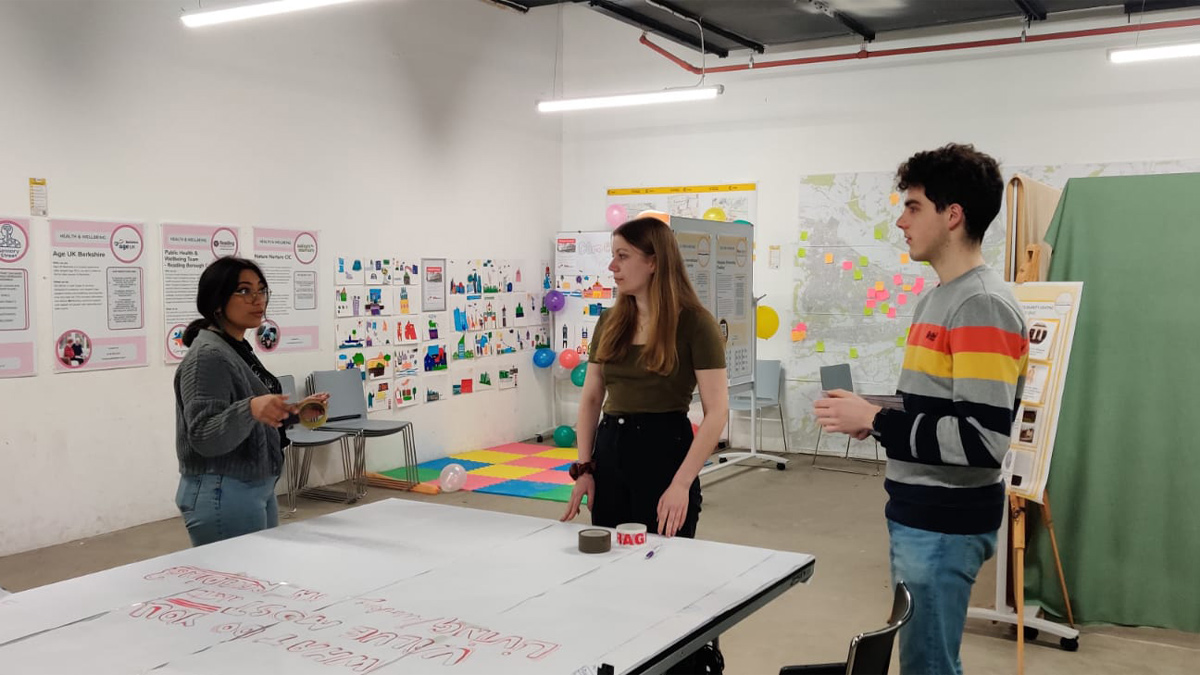Daniel decided to return to the School of Architecture for his Part 2 studies, having previously completed his Part 1 BSc Architecture at Reading.
He worked for HNW Architects during his second and third-year holidays when he was an undergraduate student, and was delighted to be offered a job there. HNW focuses on educational, residential and commercial architecture, and Daniel has worked on a range of projects across various sectors within the practice, developing skills required to be an architect.
“The company has been great about letting me continue to work part-time whilst doing my master’s.”
Design for deconstruction
In his master’s dissertation, Daniel is focusing on Design for Deconstruction.
“Many architects view their buildings as permanent monuments, yet the average life cycle of a building is 60 years. On average 50,000 buildings are demolished every year in the UK (Hurst, 2019).
“We have an environmental crisis and construction industry waste is a big part of it. Architects need to realise their buildings will not be there for ever, and design with deconstruction in mind.
“It’s important to be able to deconstruct with minimal damage to the environment, and to be able to recycle the materials, which can recoup the costs involved in building more thoughtfully.
“Consequentially, by reducing the quantity of waste as well as minimising consumption of raw materials, design for deconstruction can be seen as a vehicle to lower the embodied carbon levels of projects, mitigating negative environmental impacts that the construction industry has on the environment.”
Buildings as material banks for future resources
Daniel's dissertation revolves around the idea of dismantling buildings to reuse materials, connecting environmental sustainability with economic, social and cultural resilience. As a result of this, less buildings will be destroyed, alleviating negative environmental and health implications of traditional demolition processes.
“It will take a bit more time to systematically deconstruct buildings to recover resources, but the built environment would become material banks for future construction.
“At the moment there is nothing within building regulations to require that. It needs to go into law to roll out throughout the construction sector. There needs to be cohesion in the process to reduce confusion and successfully implement design for deconstruction principles.
“My design and dissertation tutor helped me immensely in my organisation and thoughts about this subject. The teaching I have experienced has been invaluable; particularly learning from practitioners and experts, like Dr Tijana Blanusa from the University of Reading School of Agriculture, Policy and Development, who is also a Principal Horticultural Scientist at the Royal Horticultural Society and expert in urban greening, biodiversity and biophilic design.”
Architecture in the context of the real world
“Dr John Harding, who teaches Architectural Technologies, among other subjects, has always given time to every single student. He has made a real difference in the way I look at architecture, especially as I base everything I do on construction, rather than purely design. John has really influenced the way I take projects forward.
“He also helped a lot when I taught the undergraduates.”
Daniel found it fascinating to be part of the cohort that helped to tutor first year architecture undergraduates. Not only was it good fun, he explains, it was also fulfilling to see the students’ progress. He found that he and his cohort were able to engage the students easily, making them feel comfortable about asking any kind of question about design and architectural studies.
And he shares his advice for aspiring architects:
“I think the best advice I would give to a potential student in any field is very simple: follow what interests you. I focused on my interest in the construction side of architecture, and that made my work extremely absorbing, as well as clarifying my future career.”
Learn more about studying a Master of Architecture at Reading
References
Hurst, W. (2019) ‘Introducing RetroFirst: a new AJ campaign championing reuse in the built environment’, Architects Journal, 12 September. Available at: https://www.architectsjournal.co.uk/news/introducing-retrofirst-a-new-aj-campaign-championing-reuse-in-the-built-environment (Accessed: 14 January 2022)



